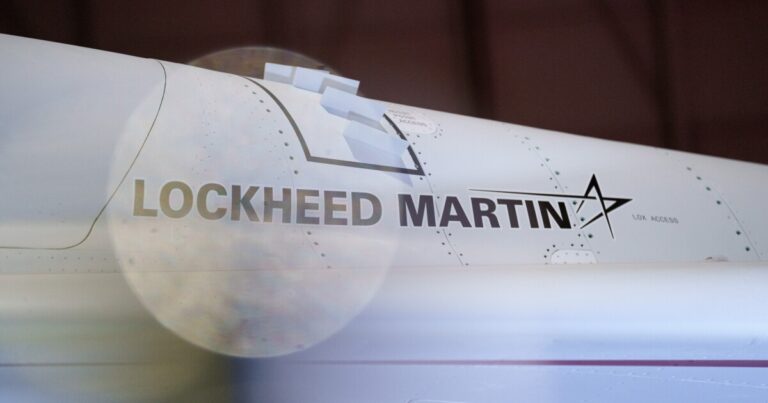Lockheed Martin Corp. caught investors off guard with $1.6 billion in charges and a possible tax hit that sent its stock tumbling, the latest setback for the defense giant whose popular F-35 jet faces criticism over cost overruns and delays.
The company’s shares plunged nearly 11% on Tuesday — the biggest drop since October 2021 — after the world’s largest defense contractor reported earnings that missed analyst estimates and lowered its outlook for the year.
At issue, the company said, were program losses involving its secretive Skunk Works operation and separate helicopter development efforts for the Canadian and Turkish governments. It also flagged $169 million of charges related to losing out on the U.S. Air Force’s F-47 fighter jet contract that went to Boeing Co., and other newly identified risks.
Lockheed also cautioned it faces a potential $4.6 billion in additional taxes owed after an accounting change, although it is contesting the matter with the Internal Revenue Service.
The array of charges came after Lockheed’s new chief financial officer, Evan Scott, initiated a sweeping review of the company’s performance on several programs. The effort was intended to root out potential risks and “to prepare the company to fully focus on the growth opportunity,” Lockheed chief executive officer Jim Taiclet said during an earnings call Tuesday.
“On one level you could argue this clears it all up, but on the other you could argue that it may be a roach motel, with more yet to emerge from under the bed,” said Nick Cunningham, managing partner at Agency Partners in London.
The results bring into sharper focus Lockheed’s struggles with execution problems on the F-35 and high-profile contract losses on franchises it once dominated, like the replacement to Lockheed’s out-of-production F-22 scored by Boeing in an upset win this year.
While the Pentagon sharply cut its proposed purchase of F-35s for fiscal 2026, it poured more money into Northrop Grumman Corp.’s Sentinel intercontinental ballistic missile program and B-21 stealth bomber.
“What was once a strength is starting to turn into a weakness,” said analyst Scott Mikus with Melius Research, noting the slowing pace of growth for Lockheed’s aeronautics division with the F-35 already at peak production rates.
The classified Lockheed program stems from a fixed-price contract awarded in 2018, Scott said. The company estimated the program would drain nearly $900 million from its cash flow through the end of next year. But the customer is “open” to striking more reasonable contract terms given its importance to national security, Taiclet added.
The F-35 is the world’s most widely flown fifth-generation fighter and a mainstay of US airpower. The company cleared a backlog of aircraft held up by software upgrades in recent months, and Lockheed said it delivered 50 units of the aircraft in the quarter.
Foreign customers continue to buy the fighter, including the UK, which said in June it would add at least a dozen F-35A jets to the more than 100 F-35B vertical takeoff and landing models the country already plans to buy. But a government spending watchdog warned that month that the program’s cost had risen to £71 billion ($95.7 billion).
Lockheed’s operating profit fell by 65% to $748 million, compared with the $2.15 billion expected by analysts surveyed by Bloomberg. Net sales of $18.16 billion also missed estimates, according to a statement on Tuesday.
Lockheed Martin predicted full-year earnings per share of $21.70 to $22, down from a previous prediction of as much as $27.30.
The company will need a strong performance in the second half of the year to meet its lowered forecast, analyst Ken Herbert of RBC Capital Markets said in a note to clients Tuesday. The current guidance implies Lockheed revenue will grow 6.7% over that time, “which we believe is elevated compared to peers,” he said.
The weapon maker’s former chief financial officer, Jesus “Jay” Malave, was recently announced as Boeing’s new finance chief, taking over from Brian West, who will leave in mid-August.
Northrop Grumman Corp. on Tuesday raised its earnings guidance for the year, driven largely by the Sentinel program. Development of that system, which is to replace the aging Minuteman III missile, is on track to cost more than $140 billion.


